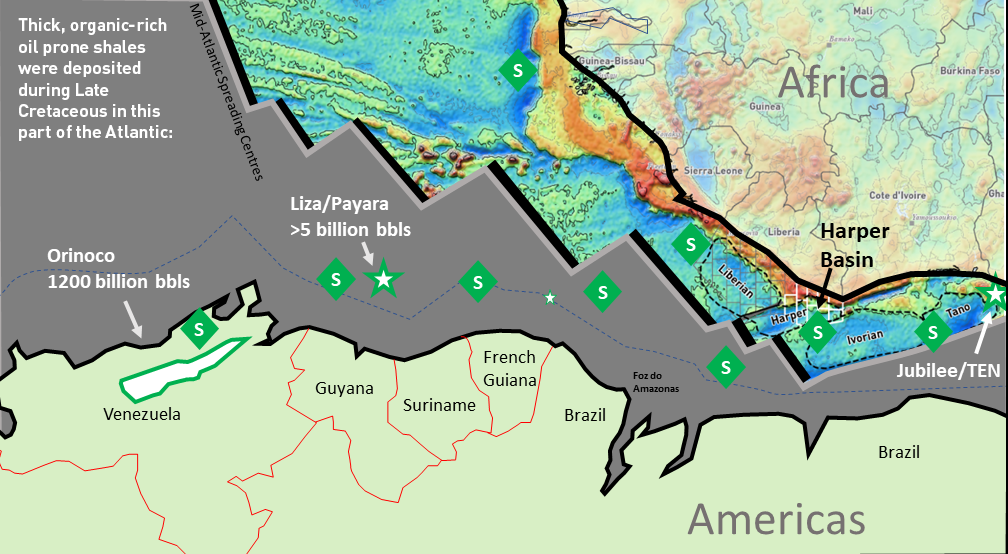Paper Summary
Felicia Winter and Richard Hedley present their interpretation of several attractive Late Cretaceous deep-water play types in the Harper Basin.
Introduction
During the Late Cretaceous, global sea level was at an all-time high and thick organic-rich shale accumulated in the newly formed Atlantic Ocean. The equatorial Atlantic was a mere 700 to 1000 km wide, separating West Africa and South America
(Figure 1). Multiple mid-ocean spreading centers formed and differential spreading was accommodated by offset on east-west trending ocean transforms. Late Cretaceous movement along these transforms created fracture zones resulting in transpression in some adjacent basins.
The Harper Basin is a relatively narrow basin that formed between two major transform fracture zones. The transforms play
an important role in focusing sediment in the basin. They may also play an important role in maturing source rocks – especially if they offset spreading ridges on one side of the transform against source rock depocenters on the other side.
There are several attractive play-types in the Harper basin including:
- Late Cretaceous reservoirs sourced from Cenomanian-Turonian source rocks
- Late Albian shallow marine sandstones sourced from underlying syn-rift lacustrine source rocks
- Syn-rift continental sandstones sourced from syn-rift source rocks
This article will focus on the Late Cretaceous deep-water sandstone play.
Click on the DOWNLOAD PDF button above to access the full article.
 Figure 1 Turonian plate reconstruction showing source rock deposition in proto-Atlantic Ocean.
Figure 1 Turonian plate reconstruction showing source rock deposition in proto-Atlantic Ocean.

